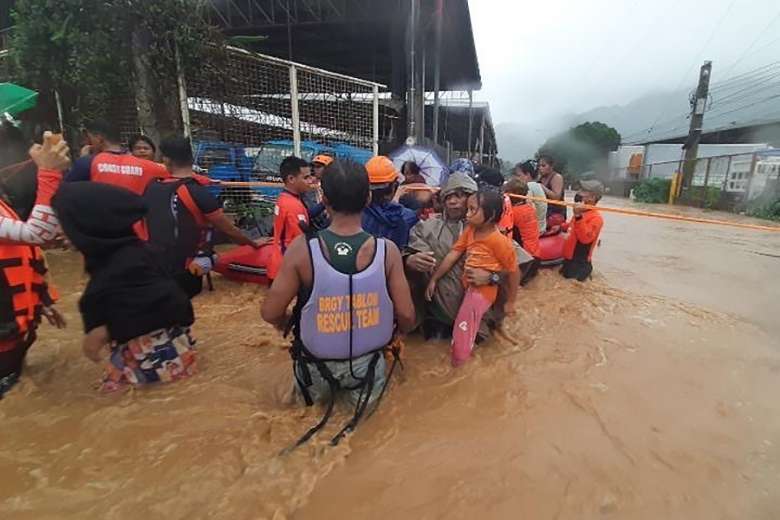Thousands of people in the Philippines have fled their homes and beachfront resorts as super typhoon Rai lashed the country on Thursday, with authorities warning of “very destructive” winds and torrential rain.
The storm was packing maximum sustained winds of 185 kilometres (115 miles) an hour as it barrelled towards central and southern regions of the vast archipelago, the state weather agency said.
But it warned wind speeds could intensify to 195 kilometres an hour before it makes landfall near the popular tourist destination of Siargao Island in the afternoon.
It would be the strongest typhoon to hit the country this year, the agency said.
“Very destructive typhoon-force winds… may cause generally heavy to very heavy damage to structures and vegetation,” it added, flagging possible “widespread flooding” and rain-induced landslides.
More than 45,000 people sought emergency shelter as the storm charged across the Pacific Ocean, the national disaster agency said.
They included domestic tourists visiting the country’s famed beaches and dive spots ahead of Christmas. Foreign travellers are still banned from entering the Philippines under Covid-19 restrictions.
Verified video shot by tourists in Siargao showed trees swaying violently with the force of the wind as people waited for the full impact of the typhoon to hit.
In the town of Dapa, families slept on the floor of a sports complex turned into a temporary evacuation centre.
‘Brace for strong winds’
Scores of flights have been cancelled and dozens of ports temporarily closed as the weather bureau warned several meter-high storm surges could cause “life-threatening flooding” in low-lying coastal areas.
Weather forecaster Christopher Perez said the winds could “topple electric posts and trees” and damage houses made of light materials.
“Brace for heavy rains, brace for strong winds too,” Perez told a briefing.
Rai, locally named “Odette”, is hitting the country late in the typhoon season, with most cyclones developing between July and October.
It is the second super typhoon to threaten the Philippines since September when Chanthu grazed the northeastern tip of the main island of Luzon.
Scientists have long warned that typhoons are becoming more powerful, and strengthening more rapidly, as the world becomes warmer because of man-made climate change.
READ ALSO: French forces leave Mali’s Timbuktu base after nearly a decade
A super typhoon is also known as a category five hurricane in the US. The Earth tends to experience around five storms of that power a year.
Rai is expected to weaken slightly as it moves across the Visayas region, and Mindanao and Palawan islands, before emerging Saturday over the South China Sea and heading towards Vietnam.
The Philippines — ranked as one of the world’s most vulnerable countries to the impacts of a warming planet — is hit by an average of 20 storms and typhoons every year, which typically wipe out harvests, homes and infrastructure in already impoverished areas.













